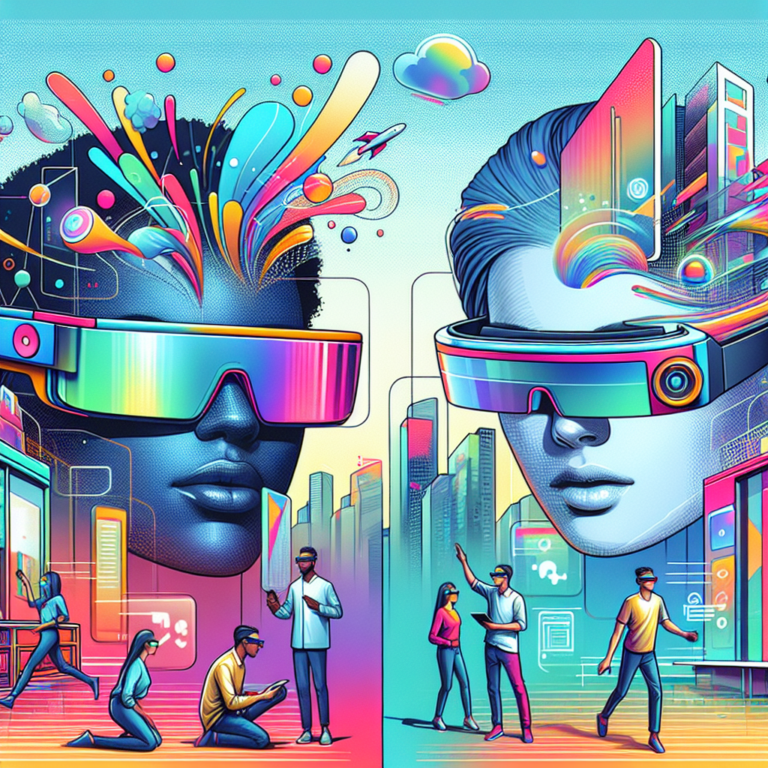Battle for the Future: Snap vs Meta in the AR Glasses Realm
Introduction to Augmented Reality (AR) Glasses
Augmented Reality (AR) glasses are at the forefront of technological advancement, offering an interface that blends digital content with the physical world. As more companies dive into this promising sector, two giants, Snap and Meta, are leading the charge. Both have invested heavily in developing AR eyewear, but their approaches and visions differ significantly.
The Vision of Snap
Snap Inc., renowned for its popular platform Snapchat, has ventured into AR with innovative ideas that prioritize user engagement and creativity. Their AR glasses, like the Spectacles, aim to enhance the user experience in social media and communications.
Key Features of Snap’s AR Glasses
Snap’s AR glasses are designed to:
- Capture Memories: With built-in cameras, users can take photos and videos from their perspective, living in the moment while seamlessly sharing their experiences.
- Interactive Filters: Users can access a wide array of interactive filters that transform their surroundings into unique experiences, enhancing storytelling elements.
- Sleek Design: The aesthetics of Snap’s glasses are modern and fashionable, appealing to younger demographics who prioritize style.
The Approach of Meta
On the other hand, Meta, the company formerly known as Facebook, is aggressively pursuing AR glasses as part of its broader strategy to enhance the metaverse experience. Their ambition lies in creating a more immersive world, blurring the boundaries between digital and physical interactions.
Distinctive Features of Meta’s AR Glasses
Meta’s approach to AR technology includes:
- Social Connectivity: Meta’s glasses aim to redefine how we connect with others by integrating social media functionalities that allow real-time interactions between users.
- Immersive Experiences: Focused on virtual environments, Meta’s glasses promote experiences that parallel real-life activities, creating a seamless transition into the metaverse.
- Advanced Technology: Meta invests in state-of-the-art technology, aiming to elevate the user experience with high-resolution displays and robust processing capabilities.
Market Dynamics and Competitive Landscape
The AR glasses market is rapidly evolving, with both Snap and Meta striving for dominance. The competition between these two companies is not just about product features, but also about branding, marketing strategies, and user engagement.
Target Demographics
Understanding their target markets is crucial for both Snap and Meta.
- Snap primarily targets younger audiences who seek engaging social media experiences and value creativity in their digital interactions.
- Meta, in contrast, focuses on a broader audience, including those interested in virtual reality and immersive experiences, creating a gateway to its expansive metaverse vision.
Potential Challenges Ahead
While both companies are optimistic about their AR futures, they face significant challenges in the competitive landscape.
Technological Hurdles
Challenges include:
- Hardware Limitations: Both companies need to continually innovate to overcome constraints related to battery life, weight, and display quality.
- Privacy Concerns: With built-in cameras, users may express concerns regarding privacy and data security, prompting both companies to address these issues transparently.
Market Acceptance
Furthermore, market acceptance poses another hurdle:
- User Education: Many consumers are still unsure about the practical uses of AR technology, necessitating efforts to educate potential users about the benefits and applications.
- Price Points: Affordability will play a crucial role in adoption, requiring both companies to consider pricing strategies that attract mass-market consumers.
Innovative Use Cases for AR Glasses
The potential applications of AR glasses are vast, promising transformative experiences across various industries.
In Entertainment
In entertainment, AR glasses can:
- Revolutionize Gaming: Games can be enhanced with real-world interactions, creating an immersive experience that engages players like never before.
- Film and Media: Filmmakers can offer viewers interactive storytelling options, providing a unique way to experience movies and shows.
In Education and Training
In education, AR technology can:
- Enhance Learning: Students can visualize complex concepts and engage in hands-on activities through interactive simulations.
- Professional Training: Industries such as healthcare and manufacturing can utilize AR for training programs, providing real-world scenarios without the associated risks.
The Future of AR Glasses
As we look ahead, the competition between Snap and Meta will likely intensify. Each company is set on carving out its niche in the AR glasses market, but their paths may very well diverge.
Consumer Trends
Tracking consumer trends will be essential for both companies as they adapt to the evolving landscape.
- Increased Demand: As consumers become more tech-savvy, the demand for innovative AR experiences is expected to surge.
- Sustainability: Users may increasingly prefer brands that prioritize sustainable practices in their production and materials.
Conclusion: The AR Glasses Showdown Continues
In the battle for AR glasses supremacy, Snap and Meta are both leveraging their unique strengths to appeal to consumers. The future will determine which company will emerge as the leader in this exciting, transformative technology space.




0 Comments